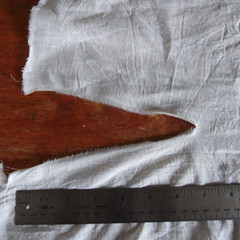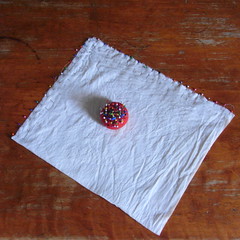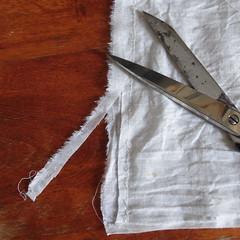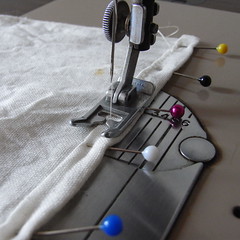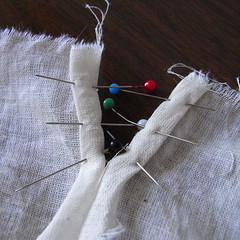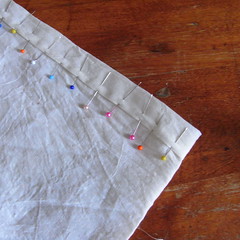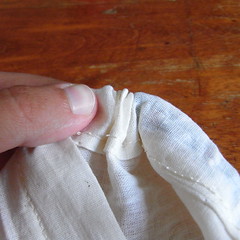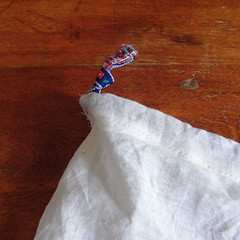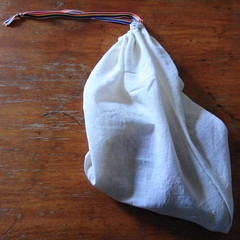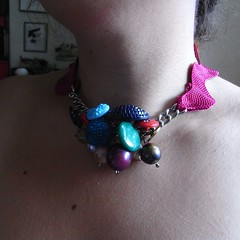
I was perusing expensive catalogs the other day when my attention was caught by a necklace made from what looked like large plastic chain links and vintage buttons. Now I didn’t have any plastic chain, but I had just about all the other components I thought I needed. The free craft project! Free, at least, in that I completely forgotten when I got the button, wire, ribbon and chain I planned to use.
Here's the original necklace, which I saw in Anthropologie's catalog:
[hmm . . . apparently flickr yanked that image, but my necklace is cooler anyway. hey, anthropologie, you didn't want me doing free advertising for you? stupid you.] --revised 3/12/2010
To make my version, here's what you'll need:
pliers
wire cutters
a sewing machine, or a needle and thread
chain with larger links
ribbon
buttons and beads
seed beads
Here's how to do it:
For the part of the necklace that requires links, I decided to use part of an old wallet chain - the kind that lets you attach your wallet to your belt. In 1994 we thought these chains made us look like toughs, but it’s not 1994 anymore, thank god. I had one I would never wear again, so I took out a link and used half for this project.
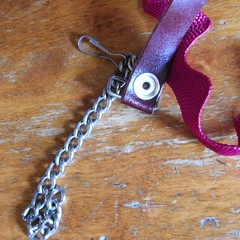
Buttons I have galore.
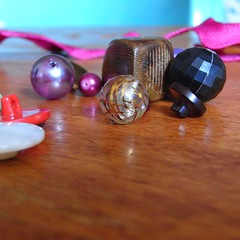
Some are from my mom’s old stash, some are from an awesome fabric store on the south side of Chicago. I thought at first that the best kind of button would be the kind with a central metal post, basically a bead with a loop on the back. I didn’t have all that many of that shape, so I also got out a plastic necklace I had broken the other day, and mined some beads from there.
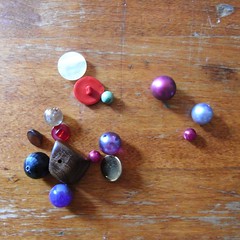
As I started putting beads on the chain, I realized that a mixture of bead-like buttons and larger flat buttons (the kind for a winter coat) actually made a more pleasing cluster on the chain.
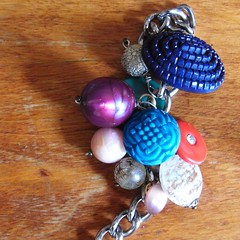
Flat buttons can be attached to the chain with a single jump ring (I used cheap non-silver ones, since the chain isn’t silver anyway). Bead buttons also take a single ring.
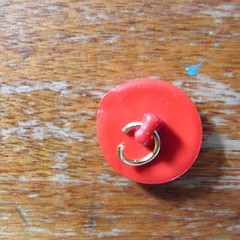
Actual beads need a wire wrap (or earring pins would work really well, but I didn’t have any). I put a seed bead in a loop of wire to hold the bottom of the bead, wrapped a loop at the top, and then attached that to the chain with a jump ring.
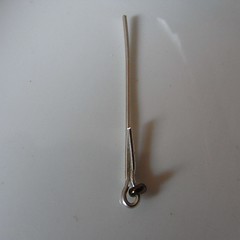
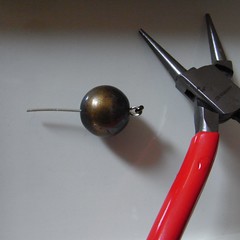
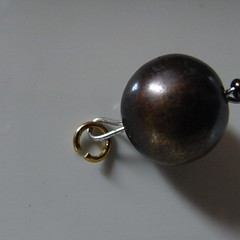
This process took a lot more beads and buttons that I had originally planned on.

For the part that goes around your neck I used wide ribbon. Lots of different kinds would work for this. The best color I had was in the form of enormous rick-rack.
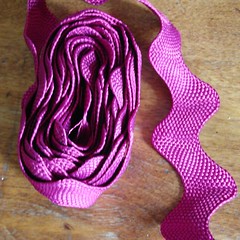
First you pull the ribbon through the end of the last chain loop, fold it over and sew it down. Then hold the necklace up to your neck, look at how long you want it to be, and mark the ribbon at the center of the back of your neck. Cut it about an inch past the mark, fold it under and sew. Do the same on the other side, but make that piece longer - you want it to overlap the first piece by about an inch.
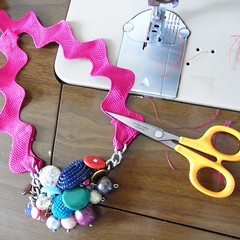
Now, find a nice small button you want to see holding the necklace closed. Make a button hole near the end of the longer ribbon. Sew your button to the end of the shorter one.

(I made a pretty half-assed button hole. If you want to see how to do it correctly, look here: http://www.purlbee.com/buttonhole-tutorial/)
Finished!
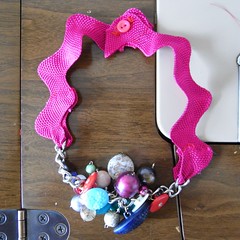
Now I think I’m going to do one with felt beads from Chinatown . . . .


